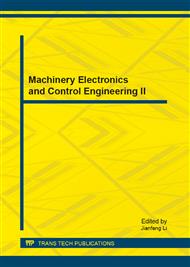p.45
p.51
p.55
p.61
p.67
p.72
p.77
p.82
p.86
Influence of Solution Heat Treatment Temperature and Time on the Microstructure and Mechanical Properties of Gas Induced Semi-Solid (GISS) 6061 Aluminum Alloy
Abstract:
The influence of solution heat treatment (SHT) temperature and time on the microstructure and mechanical properties of semi-solid 6061 aluminum alloy has been investigated in this study. Microstructure of the as-cast 6061 aluminum alloy mainly consisted of globular α-Al matrix and eutectic phase (α-Al + Mg2Si) at the grain boundary (GB). Iron rich intermetallic phase was also observed at the grain boundary. Eutectic phase started to dissolve after solution heat treatment. The dissolution of eutectic phase increased with increasing solution treatment time, however, the amount of remaining eutectic phase was found to be slightly changed after solution treating longer than 1 h at 550 °C and 2 h at 530 °C. Hardness and tensile results of specimens after artificial aging were utilized to compare and select the optimum solution heat treatment condition cooperating with the microstructural observation. The optimum solution heat treatment condition of the alloy in this study was at 530 °C for 2 h.
Info:
Periodical:
Pages:
67-71
Citation:
Online since:
March 2013
Price:
Сopyright:
© 2013 Trans Tech Publications Ltd. All Rights Reserved
Share:
Citation:


